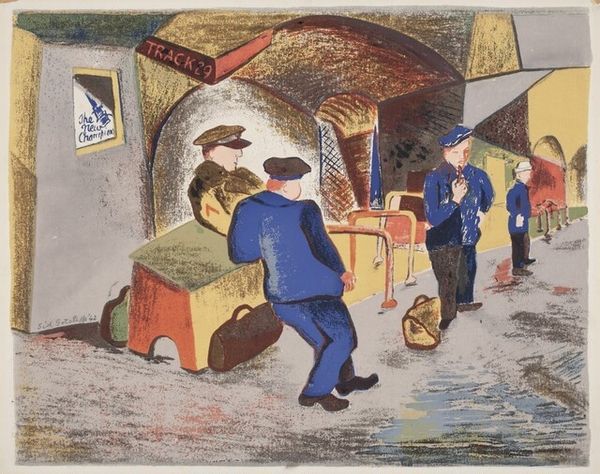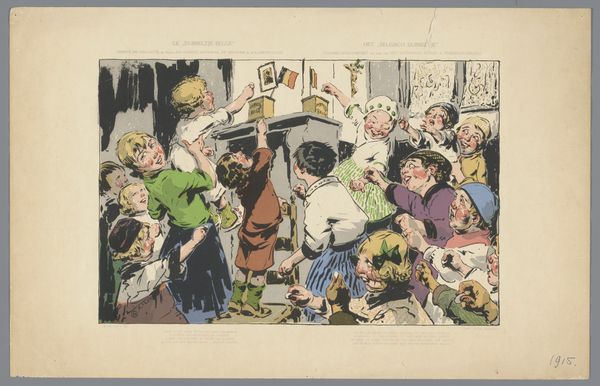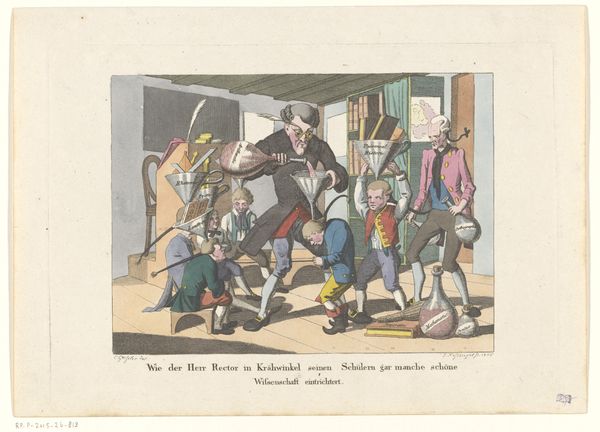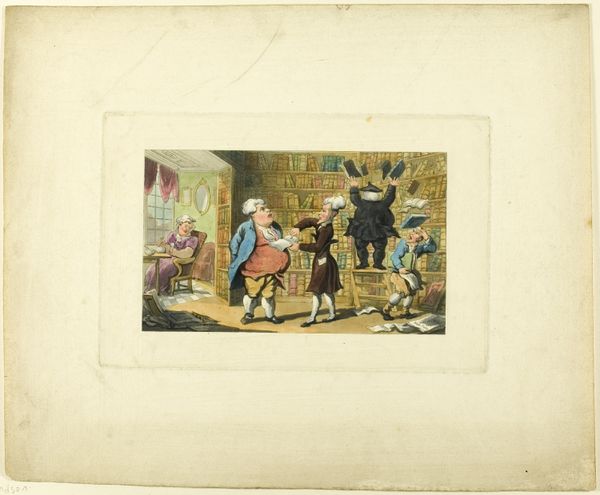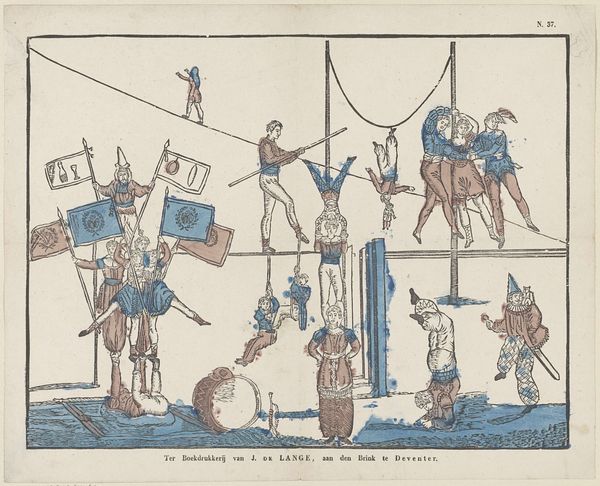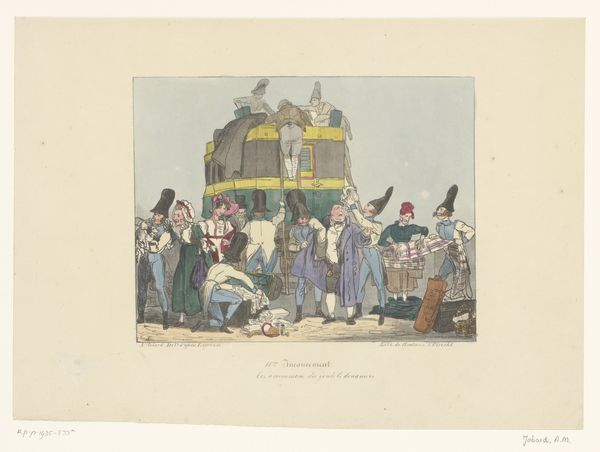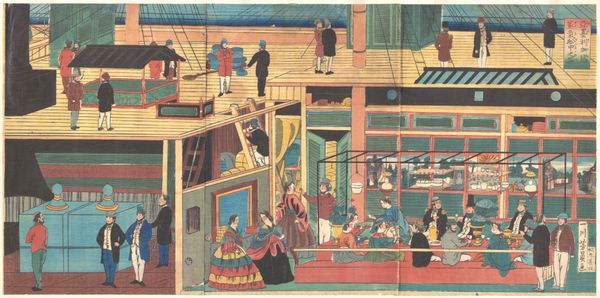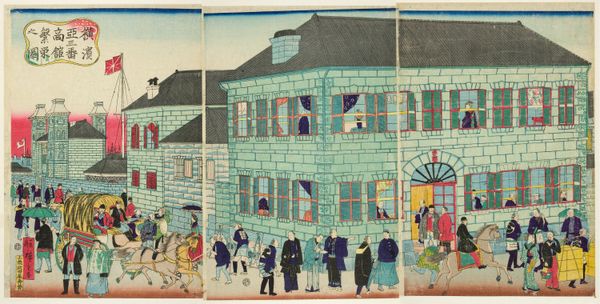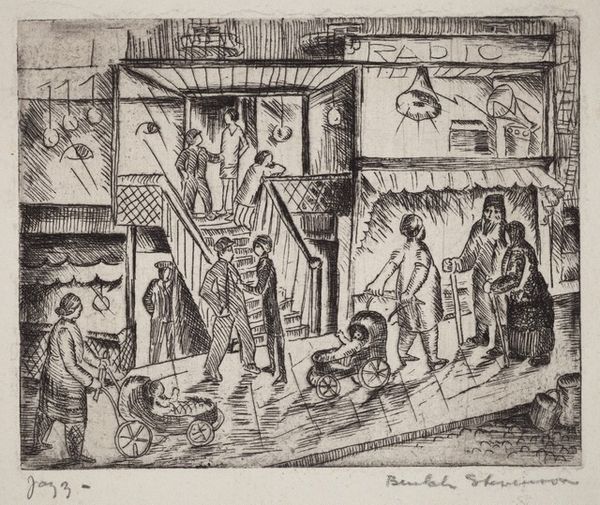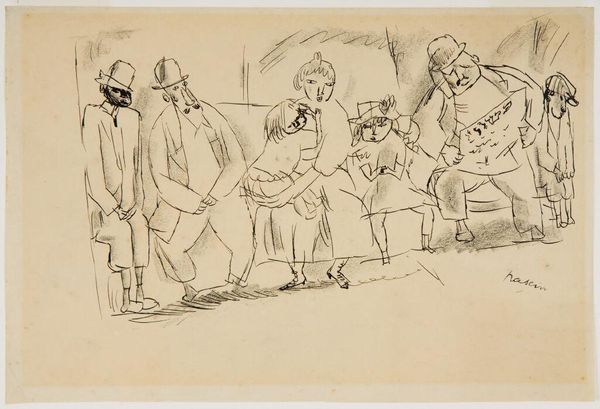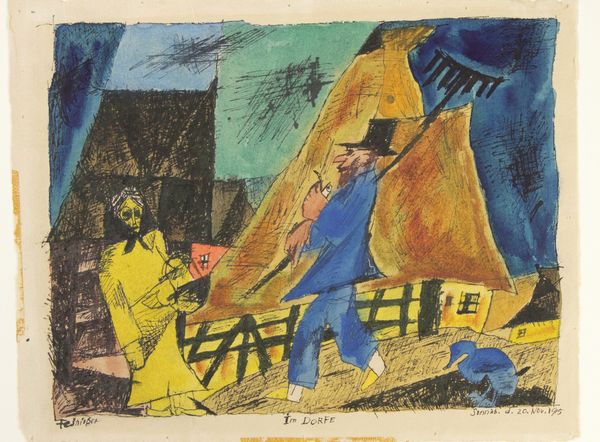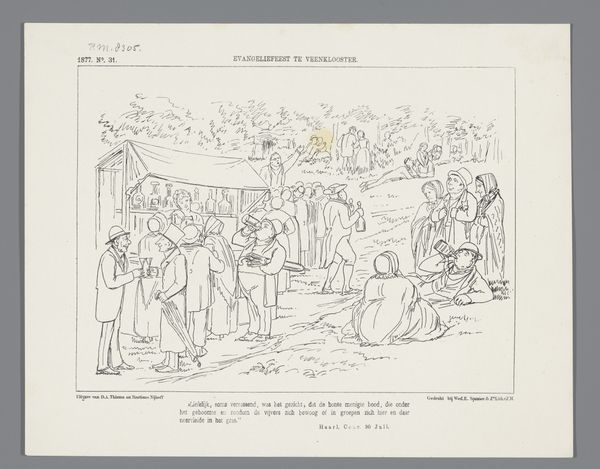
Dimensions: image: 292 x 349 mm paper: 368 x 457 mm
Copyright: National Gallery of Art: CC0 1.0
Curator: Yvonne Twining Humber's "Carnival," created around 1946, is a vibrant mixed-media piece offering a snapshot of mid-century Americana. Editor: It has a sort of whimsical quality to it. The color palette is muted yet playful, and there’s an energy, almost a naive charm, to the composition. Curator: Humber worked with a combination of print and watercolor, layering these materials to create a lively scene. The process seems integral to the feel. The use of printing allowed her to reproduce and disseminate the image, while the watercolor adds a personalized, handcrafted touch. Editor: Absolutely, and considering the time it was created, it is really important to see what was being depicted—and even *who* was being depicted. Fairs and carnivals like this were huge for community-building after the war, offering a temporary escape and supporting traveling vendors and performers. Did the socio-economic contexts impact Yvonne and what she intended to create? Curator: Exactly. The subject matter itself reflects postwar optimism, though there’s perhaps a slight element of mass production already creeping into the entertainment industry. Look at how the figures almost become types—the barker, the spectators. It raises questions about the role of art in portraying leisure and the societal structures that support it. Editor: You’re right, and seeing these carnivals were deliberately promoted to include families across all economic statuses, which you do start to see as you shift your eyes to and fro within the painting. And with it being a mixed media that uses more reproducible techniques, did that democratize access to fine art for broader society at this moment in history? It allowed her to share an image that may only live for a week and spread it widely for others to enjoy and reflect on. Curator: Definitely, her engagement with these printmaking processes reflects broader trends within the art world towards accessibility and the breakdown of traditional hierarchies. It reminds us of how much the reception of art depends on understanding its place within wider cultural and industrial landscapes. Editor: It really does makes one consider this artwork as a product of its time and its value in today's societal view as a representation of that specific space and time, not just as something with solely art aesthetics. Curator: It’s a valuable reminder of the layers of context that make up an artwork and its meanings.
Comments
No comments
Be the first to comment and join the conversation on the ultimate creative platform.
